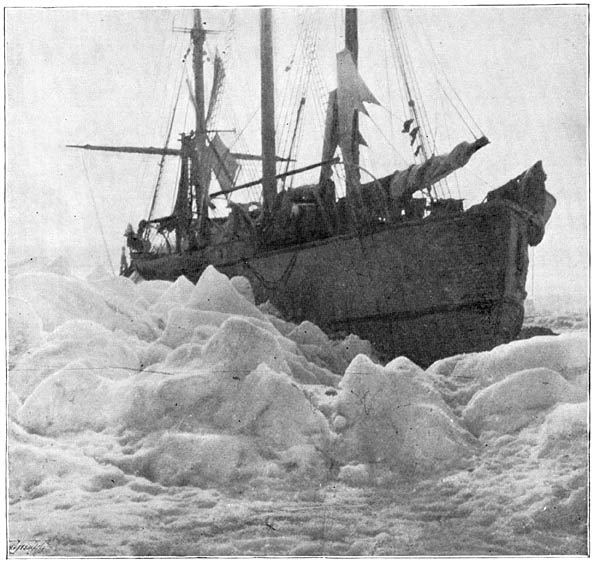A review of Farthest North
Oct 24, 2018
nansen
gutenberg
review
polar
exploration
book
To take my mind off The Rigamarole 2018 planning frenzy I’ve recently been reading “Farthest North” by Fridtjof Nansen.
It’s an extraordinary story from the “heroic age” of polar exploration. Having read and accepted the theory that the pack ice drifts across the arctic region, Nansen decided to build a ship, the Fram, that could take the pressures of the ice and “sail” it frozen in the ice to reach the pole. Opinion was divided on whether this would work. Amongst those who thought it wouldn’t opinion was divided between those who thought they would be stuck in the ice and not drift anywhere (freezing and starving to death) and those who thought they would be utterly crushed by the ice (freezing, drowning, or - well, just dying horribly). Even if it worked it was going to take them several years. They allowed for as many as eight. This was in the steam age, barely into the age of the petrol engine, but not yet in the age of radio communications.

Fram frozen in the ice - from Farthest North
The idea was brilliant and it (more or less) worked. They drifted across over the course of about three years in relative comfort. Many of the entries in the book are descriptions of the ridiculously hearty meals they ate on the way, or the parties with mechanical organ accompaniment in the ship’s saloon. Occasionally the entries are very jarring to modern sensibilities - the constant carnage of polar bears is somewhat justifiable (shoot and eat or be eaten), but in one episode they see some arctic foxes playing joyously in the distance and immediately decide to shoot them for target practice.
When it became apparent that the ship would not pass close to the north pole Nansen decided to make a two-man sledge (travelling with Hjalmar Johansen, the ship’s stoker) and kayak expedition drawn by dogs to try to get there. They set off in the arctic spring and failed to get there. They couldn’t return to the ship because they had no way of knowing exactly where it would have drifted to; instead, as planned, they headed for land. Their painful journey to land, then building a stone hut and living in it through the arctic winter (perpetual darkness remember) eating polar bears and walrus, is tremendous. They emerged, in the spring, more or less bumped into an English expedition on the way, and returned to Norway just barely before the Fram emerged from the ice.
In this respect and some others, the tale is almost epically farcical - they were constantly falling into freezing water, nearly died when their kayaks floated away, and the crew of the Fram on holidays trooped to and fro on the ice waving flags with now obscure political slogans. For the crew of the Fram the main hazard of the trip seems to have been boredom. For Nansen and Johansen the risks mainly came from avoidable accidents - for example letting their watches run down so that they had no idea of their exact longitude while trying to find land!
Nonetheless it’s a credit to Nansen that everyone survived (even put on weight) and that they returned with a trove of useful data about the polar regions. He was also a cracking author and the account is very engaging. Incidentally, after spending July 1893 to March 1895 in the company of just 13 men (plus hounds), and then March 1895 to New Year’s Eve 1895 - including several months with no daylight - in the company of just Johansen, Nansen conceded that perhaps it would be acceptable for Johansen to call him the informal “du” instead of “Herr Professor” … which is not mentioned in Nansen’s account of the journey, and only in passing by the imperturbable Johansen.
I do encourage you to read it!
Farthest North is long out of copyright, so you can download and read it (including Kindle compatible “mobi” files) for free from the Gutenberg Project here:
Nansen’s ship, the Fram, happily, till exists and has been restored. It’s on display in the Fram Museum in Oslo and I fully intend to drop by next time I’m there! Expect photos :)